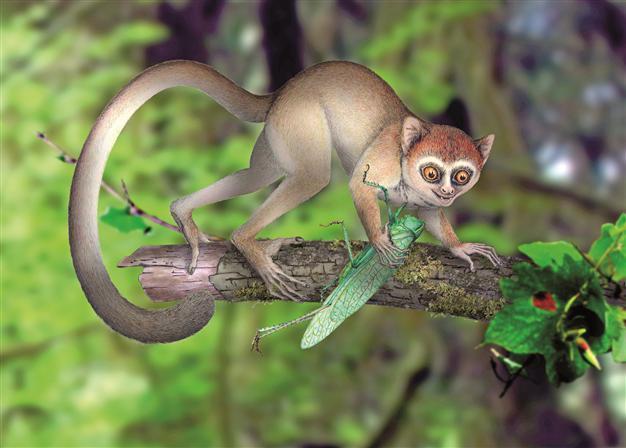Distant cousin: Tiny hyperactive primate
WASHINGTON - The Associated Press

This image shows a reconstruction of the ancient primate in its habitat. AP photo
New fossil evidence of the earliest complete skeleton of an ancient primate suggests it was a hyperactive, wide-eyed creature so small you could hold a couple of them in your hand - if only they would stay still long enough.
The 55 million-year-old fossil dug up in central China is one of our first primate relatives and it gives scientists a better understanding of the complex evolution that eventually led to humans. This tiny monkey-like creature weighed 28 gram or less and was not a direct ancestor. Because it is so far back on the family tree it offers the best clues yet of what our earliest direct relatives would have been like at that time, according to a study published Wednesday in the journal Nature.
“It’s a close cousin in fact,” said study author Christopher Beard, curator at the Carnegie Museum of Natural History in Pittsburgh. He said it is “the closest thing we have to an ancestor of humans” so long ago.
Primates are the order of life that includes humans along with apes, monkeys, and lemurs. Humans are set apart from other mammals because of our grasping five fingers and toes, nails, and forward-facing eyes, Beard said.
